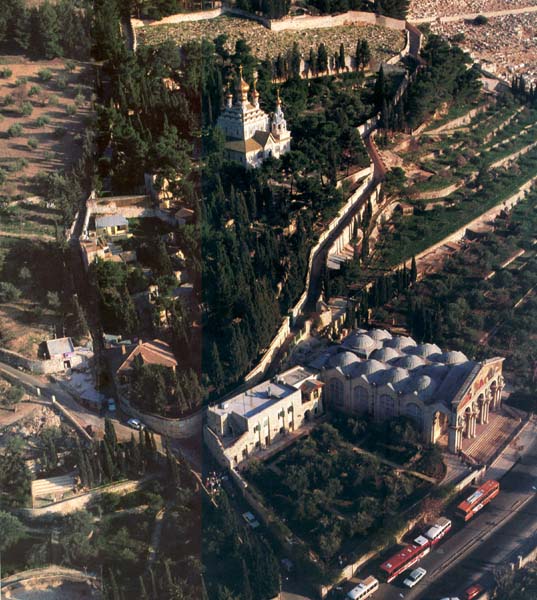Image Details

Richard Nowitz
The verdant Mount of Olives takes its name from the fruit of the gnarled ancient trees on its slopes. A grove of olive trees, reputedly more than 1,000 years old, grows in what today is called the Garden of Gethsemane, just left of the Church of All Nations (below center), with its 12 domes. Further up the hill stands the magnificent Russian Church of Mary Magdalene, with onion-shaped domes.
After the Last Supper, Jesus left Jerusalem with his disciples, crossed the Kidron Valley and climbed up the Mount of Olives “to a place called Gethsemane” (Matthew 26:36), where he was arrested later that evening. Tradition locates the arrest in the olive-tree garden beside the Church of All Nations. But, examining the gospel stories themselves in conjunction with archaeological remains of the Cave of Gethsemane (located inconspicuously in a building with a flat, semi-circular roof and small, domed skylight, at bottom left), Joan Taylor suggests that this cave, and not the well-known garden, should be identified as Biblical Gethsemane, the site of Jesus’ arrest.
